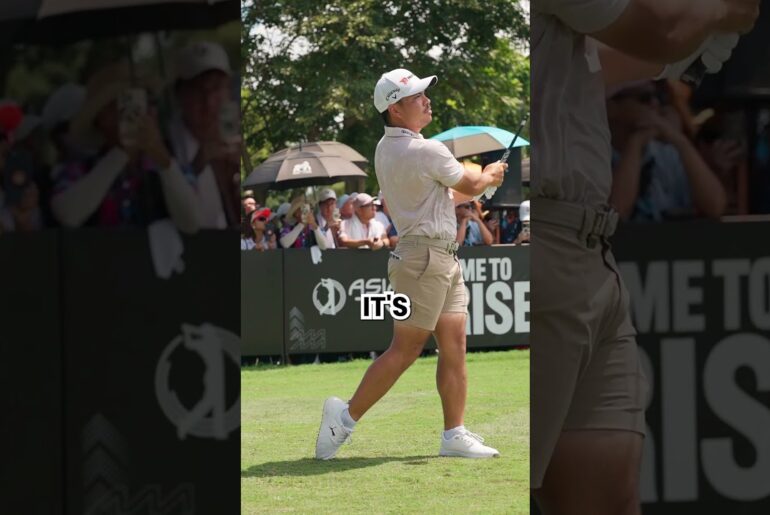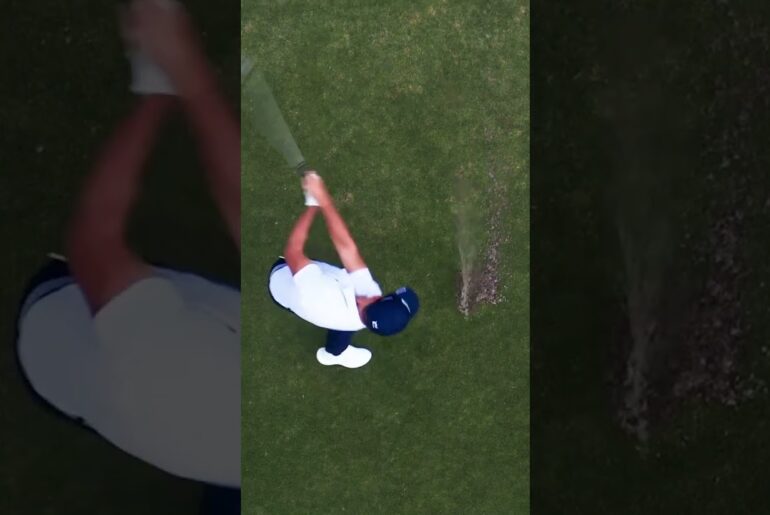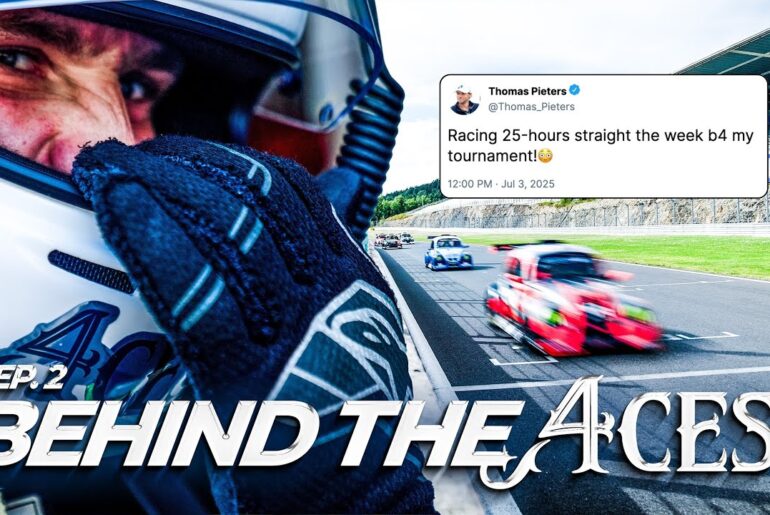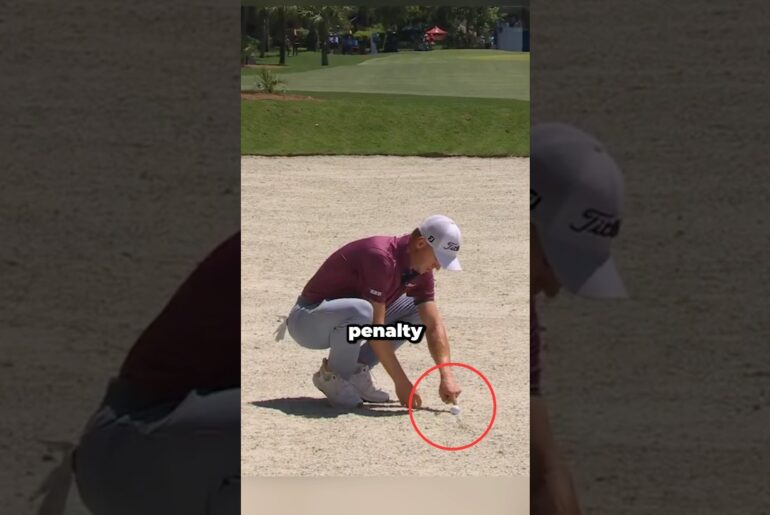GOLF’S BIGGEST SCANDALS, PART 4 ⛳️In this video, we pull back the curtain on the most dramatic rules controversies, ethical dilemmas, and infamous disqualifications that have forever changed the game. From caddie compensation battles to viewer-called penalties that led to major rule changes, we break down what happened, who was right (and who looked right), and what lessons the golf world learned.
🚨 Featuring: Matt Kuchar’s Caddie Fee Disaster, Patrick Reed’s Embedded Ball Drama, Solheim Cup “Gimmegate,” and the Dustin Johnson US Open Fiasco.
Video Chapters (Time-Stamps Highly Recommended):
Matt Kuchar & “El Tucan” (2018-2019): The Caddie Pay Controversy
What was the original fee paid to local caddie “El Tucan” (David Ortiz) after Kuchar’s Mayakoba Classic win? The $5,000 payment was far less than the customary “up to 10%” of the winner’s prize.
Why did this seemingly small payment become a massive scandal? The controversy was fueled by the stark contrast between the flat fee and Kuchar’s $1.3 million prize, forcing a discussion about equitable compensation in golf.
The Resolution: Kuchar initially defended the pre-agreed amount but eventually apologized, sent an additional $45,000 (for a total of $50,000), and pledged a donation to tournament charities.
Patrick Reed’s Embedded-Ball (2021): Right by the Rule, Wrong by the Eye
Reed marked and lifted his ball for embedded-ball relief on hole 10 at Torrey Pines, with an official eventually ruling the drop proper.
Why was the decision so controversial? Commentators and social media felt the choreography was “interpretive,” as Reed handled the ball before the referee arrived, which created bad optics.
The Lesson Learned: In golf, being right is often less important than looking right to the public gallery.
Solheim Cup “Gimmegate” (2015): The Unconceded Putt
American Alison Lee picked up her short putt on the 17th hole, believing it was conceded, but Suzann Pettersen of Europe claimed the gimme was never given.
What was the consequence? Europe took the point, but the incident fueled the U.S. team to a dramatic comeback to win the Cup.
The Takeaway: Never assume a gimme, and always listen for the official magic word before picking up your ball.
Dustin Johnson Penalty Saga (2016 US Open): Mid-Round Ambiguity
DJ’s ball moved slightly on the 5th green at Oakmont. Officials informed him mid-round that a penalty might apply later, forcing him to play the final six holes without knowing his score.
What was the final ruling? One stroke was added to his score after the round, but Johnson still won comfortably.
The USGA’s Scar: The governing bodies were widely criticized for the “terrible broadcast product” created by the mid-round ambiguity. The fiasco eventually led to a Local Rule in December 2016 removing the penalty for accidentally moving a ball on the green, later incorporated into the 2019 rules.
Bonus Scandals Covered: Sung Kang’s Drop Dispute (2018), Haotong Li’s Caddie Alignment Penalty (2019), Mark Roe’s Wrong Scorecards (2003), and Pádraig Harrington’s Viewer-Call DQ (2011).
🔎 Why This Matters
These moments reveal the tension between golf’s rigid rulebook and the realities of modern play, especially with high-definition cameras and social media scrutiny. Learn how controversies led the USGA and R&A to modernize the Rules of Golf in 2019, emphasizing common sense and fair play.
#Tags (Long-Tail & SEO):
#GolfScandals #RulesofGolf #DustinJohnsonPenalty #MattKucharCaddie #PatrickReed #EmbeddedBall #Gimmegate #SolheimCup #GolfRulesExplained #PGA #USGA #HaotongLiPenalty #SungKang #ViewerPenalty #PadraigHarrington #MarkRoeDQ #GolfControversy #ElTucan #GolfRuleChanges #GolfHistory
Make sure to hit subscribe
Matt Cooer and El Tucan 2018 to 2019. It began as a wholesome tale. A veteran pro wins the Makoba Classic in Mexico with a local caddy nicknamed El Tucan. That was in November 2018. Then the internet discovered the fee of $5,000. Not the customary up to 10% fairy tale number fans imagine, but a flat amount that felt budget. Cue a week of spreadsheets, ethics lectures, and people who hadn’t tipped a barista in months suddenly becoming experts in equitable compensation. Coocher initially defended the arrangement as pre-agreed and fair for a fill-in caddy. Golf Twitter disagreed loudly. Sponsors looked nervous, think head covers retreating into the bag. On February 15th, 2019, he apologized, sent an additional $45,000, total $50,000, and pledged a donation to tournament charities, transforming from frugal villain back into awkward uncle who misread the room. The saga worked because it had everything. A catchy nickname, neat numbers, and a morality play staged on immaculate passum. It forced golf to talk about money, who makes it, who enables it, and how customary customs actually are. The final score, one win, one lesson, and one line added to every Cat’s mental rate card. Patrick Reed’s embedded ball 2021, rainy Saturday, hole number 10, thick rough, and a lie that looked like it had signed a lease. Patrick Reed marked lifted, and according to the rules official, took proper embedded ball relief. According to several commentators and approximately all of Twitter, the optics were more interpretive. The PGA tour posted the procedural checklist. The internet posted slow motion arhythmia. The problem wasn’t the rule. It was the choreography. Reed did the steps legally. Mark, lift, check, call in an official, but in an order and pace that felt like an optitian testing lenses. Better here or here. By the time the referee arrived, the ball was already in his hand, which is fine if you’re in the book, less fine if you’re on the timeline. He went on to win the tournament, which didn’t help the volume control. Monday brought explainer videos. Tuesday brought think pieces about trust. And by Wednesday, we had consensus on exactly nothing except that embedded ball relief will forever require both aronomy and vibes. So, what did we learn? In golf, being right is often less important than looking right. If the gallery’s eyebrows reach the bill of their caps, you’ve already lost a stroke in public opinion, if not on the card. Soulheim Cup Gimme Gate 2015. Matchplay thrives on honor, which is why nothing detonates faster than an 18-in putt nobody actually said was good. At St. Leon rot in Germany. Allison Lee thought her short one on the 17th hole was conceded. She picked it up. Europe’s Suzanne Person said it wasn’t. Rules officials agreed with the rules as they do. America fumed as they do. What followed was a masterclass in how quickly an elite team event can become a courtroom drama. On the green, pointed stairs and a thousand micro expressions. On television, slow-mo replays of head nods that never were run on loop like zaprooder for golfers. on social media, indictments, exonerations, and several thousand hypothetical if I were out there takes from people who haven’t been out there. Europe took the point. The US used the slight rocket fuel and stormed back to win the cup. Person apologized the next day, saying the moment didn’t reflect who she was. Lee moved on eventually. The rest of us filed it under golf’s greatest teachable moments. Never assume a gimme. Always listen with your eyes. And if you’re going to pick up, make sure someone with a bib has said the magic word. Dustin Johnson penalty saga 2016 the US Open Oakmont where par is a rumor and the greens are faster than your decision-making Dustin Johnson was on the fifth green the ball wobbled and the USGA wobbled harder officials told him mid round that a penalty might apply later play on they said with the confidence of people not required to hit a 4iron into an upside down saucer Johnson who has experienced plenty of similar situations shrugged and kept launching onto fairways like javelins viewers was watched with a split screen of golf and jurist prudence. Electrons moving on HD versus did he cause it? Opeds in real time. After he finished, one stroke was added. He still won comfortably, but the presentation ceremony doubled as a press conference for interpretive dance. The fallout was educational. Governing bodies learned mid round ambiguity is a terrible broadcast product. Players learned to call for an official before their ball even thinks about moving. Fans learned that intent matters except when it doesn’t. until the rules are rewritten. So it does. Johnson left with a major. The USGAA left with a scar. After the fiasco, the USGAA and RNA introduced a local rule on December 8th, 2016, removing the penalty for accidentally moving a ball on the green, later baked into 2019 rules. Sun Kong drop dispute 2018. Some rules controversies involve committees and communicates. This one involved Twitter. During the Quick and Loans National, Joel Domin alleged that Seg Kong took an improper drop after his ball flirted with a hazard line on the par 510th hole. Officials ruled the drop legal. Kong finished strong. The internet did not. What made it sticky wasn’t the letter of the law so much as the geometry, red lines, angles, last crossed point, and the eternal truth that every golfer sees the same shot from a slightly different parallel universe. Domin, not a hit-and- run type, put his name on the claim. Kong, not obligated to play defense on social media, largely declined the back and forth. Golf being golf, the conversation became a referendum on sportsmanship, courage, and whether armchair officials should be allowed near crayons. By Monday, nobody had changed their mind, but everyone had drawn a diagram. The takeaway is as old as the rule book. Call an official, explain what you saw, accept the ruling, and keep your receipts. The court of public opinion has no appeals process, just new threads. Howong Lee Caddy alignment 2019. New year, new rules, new chaos. Howong Lee walked off the 72nd green in Dubai at the Omega Desert Classic, thinking he’d signed for a solid finish. Minutes later, he’d been docked to two shots because his caddy was deemed to be on or close to an extension of the line of play as he began to take his stance for a short putt. The difference between readying and beginning turned into the difference between tied third and tied 12th, or a big check and a smaller one. The scene was surreal. Officials freeze framing a two-footer like it was a moon landing. Players looked around and asked the obvious, “Must we now evacuate caddies to a safe distance before anyone bends their knees.” Social media suggested traffic cones. In fairness, the intent behind the rule, preventing caddies from lining players up like tripods was sensible. The early enforcement less so. Within weeks, an interpretation arrived clarifying intent and no alignment for brief incidental presence. Translation: Common Sense reclaimed a parking space. Lee’s penalty stood, but the episode did its job. Golf found the edges of a new guardrail and moved it a meter back from the cliff. Mark Rose’s wrong scorecards 2003. Mark Row shot the round of his open life at Royal St. George’s 67 in a breeze that was carrying seagulls to France. Then he discovered he’d been disqualified for forgetting to swap scorecards with playing partner Yper Paravik before teeing off. Each signed a correct set of numbers on the other man’s card. Rules are rules, said the rules. Sympathy was universal, said everyone else. There was no funny business, just a procedural banana skin that turned a contender into a spectator. The broadcast dutifully explained the difference between grossly wrong score and administrative whoops, and fans took notes in case they ever needed to ruin their weekend for free. The RNA later amended the process so this particular trapdo would be harder to fall through, which is a tidy way of admitting the old trap door was badly placed. Ro hand handled it with grace because what else can you do when life dqes you on a technicality and asks you to smile for the camera moral check the name on the top of the form before you sign the bottom or carry a label maker Padre Harrington viewer call 2011 Harrington moved his ball by a fraction detectable only to HD and slow motion monks while lifting his marker on a green in Abu Dhabi. He didn’t notice. His marker didn’t notice. Neither did his playing partners. a television viewer did, emailed the tour, and the next day he was disqualified for signing an incorrect scorecard. This wasn’t cheating, it was physics. But the combination of omnisient cameras and trial by couch felt off. If you weren’t on the featured coverage, you effectively enjoyed a looser rule book. If you were, you risked forensic audits at 1080p. The backlash helped nudge a raft of reforms, limits on viewer input, naked eye standards for microscopic movement, and eventually the 2019 modernized rules that tried to put common sense back in charge. Harrington, a walking masterclass in rules literacy, took it as a cost of doing business at the sharp end of the sport. The incident lives on as a museum piece from the age of call-in penalties, a reminder that technology can help us find truth and also drain joy if we let it. And that’s it for the fourth installment of Golf’s Greatest Scandals.







